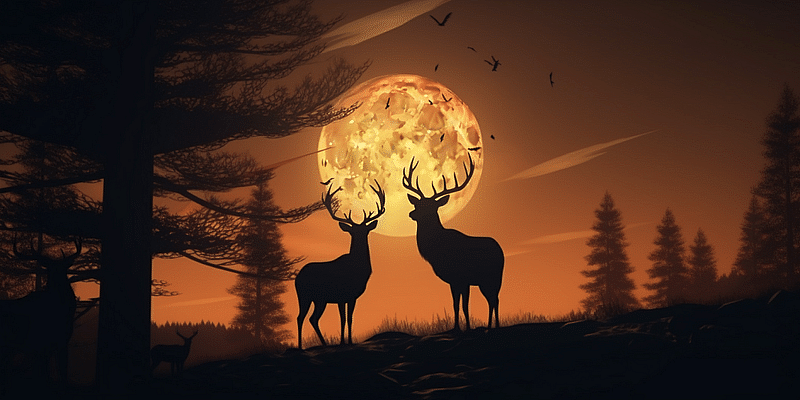The night’s expanse is a vast stage for numerous astronomical wonders, and this year, the spectacle of the Buck Moon is scheduled for July 3rd. This particular lunar phase, known for its distinctive title and associated lore, promises to turn the nocturnal canvas into a mesmerising display, offering an unforgettable vista to celestial enthusiasts and sky gazers.
The Origin and Significance of the Buck Moon
In traditional lunar lore, every full moon of the calendar year bears a unique name, reflecting the ebb and flow of terrestrial seasons and the cyclical nature of life on Earth. The Buck Moon, alternately referred to as the Thunder Moon, Hay Moon, or Mead Moon, marks the full moon of July. The term “Buck Moon” was coined in reference to the time of the year when male deer, or bucks, have their antlers at peak growth. This annual event symbolises fertility and prosperity in various cultures, echoed in the moon’s appellation.
The indigenous Algonquin tribes of North America developed a system of marking the passage of the year by assigning distinct names to each full moon, associating them with typical activities or occurrences of that period. The nomenclature “Buck Moon” has its roots in this tradition. Similarly, the alias “Hay Moon” stems from the haymaking season in July, while “Thunder Moon” alludes to the frequency of thunderstorms during this summer month.
The Splendor of the Buck Moon
The Buck Moon’s allure lies in its seasonal timing and the visibility it offers. Being a summer occurrence, the Buck Moon typically ascends at dusk and descends at dawn, rendering it observable for a large part of the night in numerous global regions. The often-clear skies of summer, barring inclement weather, add to the Buck Moon’s visual charm.
Although the July full moon doesn’t exhibit any distinctive coloration or dimensions compared to the full moons throughout the year, atmospheric phenomena and the Earth’s axial tilt can cause it to adopt a golden tint as it rises and sets, enhancing its picturesque appeal.
Viewing the Buck Moon
To witness the Buck Moon, no specialised equipment is necessary – simply cast your gaze skyward after sunset on July 3rd. If you happen to have a telescope or binoculars at your disposal, they can augment the observation experience, revealing the detailed topography of the moon’s surface.
For those engaged in astrophotography, the Buck Moon poses an excellent opportunity to secure spectacular lunar shots. For optimal results, aim to photograph shortly after moonrise or before moonset, when the moon hovers low in the sky and atmospheric refraction can yield a captivating, warm hue.
The Buck Moon on July 3rd serves as a testament to Earth’s natural rhythms and the splendor of the cosmos. Whether you’re an experienced astronomer, an aspiring space aficionado, or merely an admirer of the night sky’s beauty, seize the opportunity to observe this captivating event. As it bathes the night in its glow, the Buck Moon stands as a symbol of summer, extolling the richness and splendor of the natural world.










